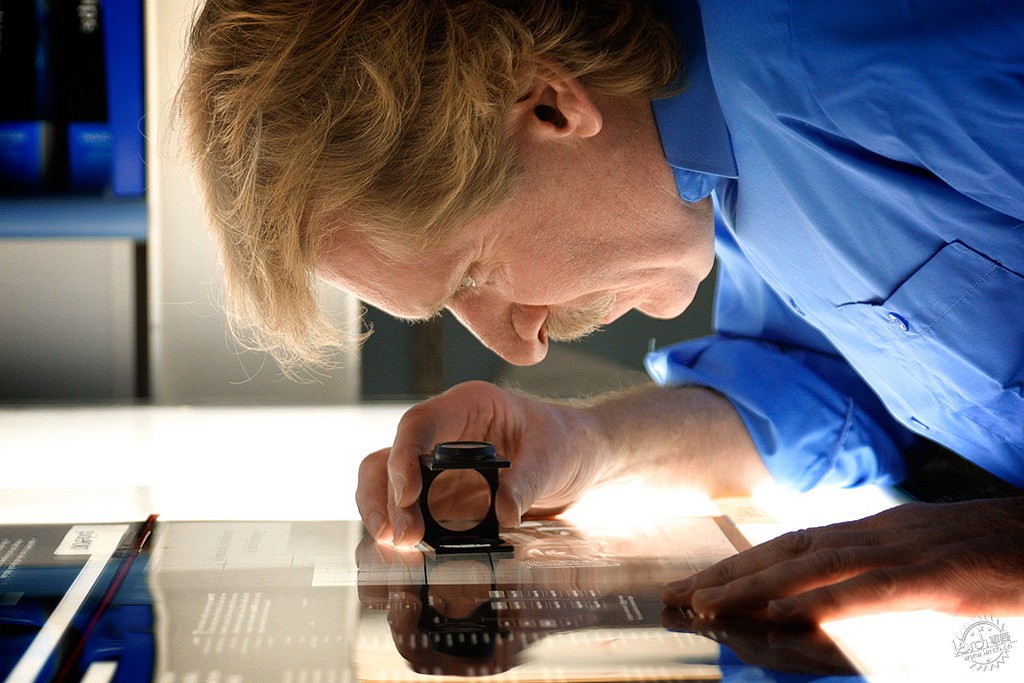
Image via flickr.com
超越建筑学的十大基本生活技能
10 Essential Skills for a Life Beyond Architecture
由专筑网小康,杨帆编译
学习建筑学的决定感觉就像在20岁时选择一条终生的道路。当你进入大学时,你认为建筑是关于绘画和建造,于是你准备成为下一个密斯•凡•德罗。然而,你可能没有意识到的是,建筑学院也为你准备了许多其他的职业选择。
作为我们“盒子外的世界”系列文章中的一部分,这篇文章讨论了十种你在建筑学院发展出的可以“另寻他路”的技能。这些技能让你可以在传统建筑学之外的世界立足,甚至在许多超出你认知范围的行业中给你提供优势。如果你想离开建筑学和改变职业,这篇文章证明了你的建筑学学位可以让你全副武装,应付几乎任何你想做的事情。
The decision to study architecture feels like choosing a path for a lifetime at the age of 20. As you enter university, you think that architecture is about drawing and building as you get ready to become the next Mies van der Rohe. What you may not realize, though, is that architecture school also prepares you for many other careers out there.
A part of our Working Out of the Box series, this piece discusses the top 10 transferable skills you develop in architecture school. These set you up for a world outside our discipline, and can even give you an edge in many industries you thought were beyond your reach. If you are thinking about leaving architecture and changing professions, this list proves that your degree equips you for pretty much anything you want to do.

Image via flickr.com
1. 注重细节
建筑学学校遵循着一种被早期软件开发商称为“瀑布流”的思维模式,这种模式是从早期的基础概念发展而来的。思维倒退是种代价高昂的错误,它可能意味着重铺100美元的地块;抑或在柱网和图纸不匹配的情况下重新设计建筑物。因此,我们发展了一种激光般精准的对细节把控的能力。我们可以在千里之外发现一个打字错误;或者情不自禁地注意到两个没有对齐的物体或两种不同色调的颜色。在学校的时候, 这看起来像是个诅咒。然而,这是一个被伪装的祝福,因为我们可以尝试在其他行业碰碰运气——在其他行业中,我们的新同事几乎肯定不会有和我们同样的深入DNA的纪律性,对细节的挑剔可以让我们更加突出。
2. 组织能力
当我们回顾我们的设计时,灵感来自多个方面。它可能来自一篇Archinect 网站的文章,可能来自一堂古生物学的选修课,抑或来自某天早上对垃圾的清理方式。无论我们在哪里找到设计的想法,保持这些想法的可靠和便于理解是一种技能,方便我们进一步深化我们的设计。正如库哈斯建议的那样,“建筑在未来的最大价值可能不是建筑本身,而是以知识或组织的形式出现。一旦我们离开我们的主场,这种将复杂的内容组织整理成简洁的思维档案的能力将使我们能够充分胜任跨学科的工作。我们不仅为世界带来了超越建筑的新鲜视角;我们也提供了一种新的工作方式。”
1. Attention to detail
Architecture school follows what early software developers would call a ‘waterfall model’, where ideas follow the foundations of earlier concepts. Going backwards is a costly mistake that can mean reprinting a $100 plot, or redesigning a building if the column grid does not match across drawings. Therefore, we develop what one of my colleagues likes to call laser-like attention to detail. We can spot a typo from miles away and can’t help but notice when two objects are misaligned or two colors have different hues. When in school, this may seem like a curse. However, this is a blessing in disguise as we move on to trying our luck in other industries. Our new colleagues will almost certainly not have the same discipline drilled into their DNA, and a spotless deliverable can set us apart.
2. Organization
As we iterate through our designs, inspiration comes from multiple sources. It may come from an article on Archinect, from that paleontology elective, or from the way our garbage bags were arranged in the morning. Regardless of where we find the ideas for our work, keeping them safe and accessible is a skill that enables us to take our designs further. As Rem Koolhaas suggests, “Architecture’s greatest value in the future might not even be architecture… but [may come] in the form of knowledge or organization.” Once we move away from our home turf, that ability to organize complex layers of content into neat archives of ideas will allow us to make the most of interdisciplinary work. Not only do we bring a fresh perspective to the world beyond architecture; we also bring with us a new way of working.

Image via flickr.com
3. 沟通能力
聪明的设计灵感可能会出现在我们的脑海中,但是如果我们不能有效地沟通,它们也就没有用武之地。我们第一次贴出来的草图可能是我们心中宏伟设计的微弱反映。然而,在我们毕业后,当我们的想法在纸上活跃起来的时候,是很少需要语言的。自我表现的平面图和精心渲染的截面图,除了它们本身的物理形式,也传达出情感的参与和社会性互动。我们都知道,交流的想法不是为了创造出一个杰作,而是通过精心策划的元素来传达清晰的想法。当我们转向不同的学科时,简洁地表达我们思想的能力将被证明是一个巨大的优势。
4. 演讲能力
从我们第一次中期审查开始,到两个月后我们取得学位,我们生命中的某个阶段结束了——那个要在有着花哨名号的建筑师和满口大词的学者小组面前展示我们设计的阶段。在那之后,我们逐渐从害羞的新手过渡到自信的专业人士。如果这些不是公众演讲的训练,那什么才是呢?再当我们站在陪审团面前时,我们的声音稳定了,我们的手掌不会出汗,聚光灯下变成了一个熟悉的地方。作为建筑师,演讲可能是习以为常的。然而,在建筑领域之外,演讲技巧常常交付给高层的管理人员。这种提供组合式演示文稿的能力是无价的,能做到这一点的员工是不易的。
5.利害管理
审查使我们除了拥有展示工作成果的能力之外,还具备另一项技能。我们要协调处理各种利益相关者,以在备受瞩目的不同评论家小组面前解释我们的设计。我们学习如何理解每个审阅者的来历,以及他们希望从我们的工作中得到什么。我们学习如何和不同背景的人沟通,并且能够说服最棘手的观众。评论者和教授们通过一个个项目指导我们,就像客户通过一项项业务引导我们一样。他们提出了思考问题的方法,但最终由我们负责决定如何推进我们的设计。如何保持维护我们的想法和接受指导之间的平衡至关重要,尤其是在需要和多个利益相关者合作的其他行业中--无论是和客户、消费者还是团队的其他成员,都是如此。
3. Communication
Brilliant design ideas may come to our minds, but they have no value if we cannot effectively communicate them. Our first-ever pin-up was likely a faint reflection of the grand design we had in our minds. However, by the time we graduate, our ideas come alive on paper with very little need for words. Self-explanatory plans and sections go alongside glossy renders that, beyond their physical form, also convey emotional engagement and social interaction. We understand that communicating ideas is not so much about creating a Jackson Pollock masterpiece as it is about conveying crisp ideas through curated elements. As we move on to different disciplines, the ability to communicate our thoughts succinctly will prove to be an immense advantage.
4. Presentation
From our first mid-term review, about two months into our degree, we’re thrown into the deep end as we present our designs before a panel of fancy-name architects and big-word academics. Review after review, we evolve from bashful novices to assertive professionals If that is not a test in public speaking, then what is?Our voice stabilizes and our palms don’t sweat when we stand before a jury—the spotlight becomes a familiar place. As architects, that may seem like the norm. Yet outside of architecture, presentation skills are often reserved for top-level executives. The ability to deliver a composed presentation is invaluable, and employees who can do so are hard-fought.
5. Stakeholder management
Reviews also equip us with another skill beyond the ability to present our work. Defending our designs before diverse panels of high-profile critics teaches us to manage different stakeholders. We learn how to understand where each reviewer is coming from and what they want out of our work. We learn how to speak to people from different backgrounds, and become capable of persuading even the most testing of audiences. Our critics and professors guide us through a project in the same way a client would steer us through an engagement. They suggest ways of thinking about a problem, but ultimately we are responsible for deciding how to take our design forward. The balance between defending our ideas and accepting guidance becomes key in other industries that require collaborative work across multiple stakeholders—be them clients, customers, or other members of a larger team.

Image via pixabay.com
6. 解决问题
作为建筑师,我们很少意识到我们的解决问题能力如何转移到其他领域。我们的设计基于挑战,将约束条件转化为机会成为我们的第二天性。比如,高度的限制不是设计的障碍,而是一个创造性地改造场地的机会。创新的核心—既要思考新事物,但也要在局限中工作。这种务实的解决问题方法远远超出了设计的范围。无论我们是否可以创造性地设计场地,或者重新思考大公司进入市场的策略,创新能力都意味着我们有很长的路要走。我们不是为了消除障碍而工作,相反,我们考虑如何以新的和创造性的方式来解决当下的问题。
7. 反馈能力
解决设计难题不是一站式的,它需要我们的工作经过多次更新,使新的想法建立在现有的想法之上。我们发展出一双挑剔的眼睛,并不断思考我们的设计可以如何改善。我们对自己的工作和别人的作品感到很自在,逐步认识到批判并不意味着批评。我们不断地学习和持续的发展超越了设计本身,这也影响到我们对工作的思考。我们怎么才能成为更好的沟通者呢?什么能帮助我们处理紧张的谈话呢?因为这些思考和提升,当我们搬到其他需要高反馈的环境时,我们就有了提高自己的机会。也就能够客观地看待我们的工作,发现漏洞,并考虑如何使每一个解决方案万无一失。
6. Problem solving
As architects we rarely realize how transferable our problem solving skills are to other fields. We design based on challenges. Turning constraints into opportunities becomes second nature. A height restriction is not a roadblock; it is an invitation to spread across the site in creative configurations. That is the core of innovation—it is thinking of the ‘new’ but working within our limitations. That pragmatic approach to problem solving goes far beyond the scope of design. Whether we’re coming up with different ways to navigate a website or rethinking the market entry strategy for a large corporation, our ability to innovate takes us a long way. We don’t work to eliminate barriers. Instead, we think about how to work around the context in new and creative ways.
7. Feedback
Solving design challenges is not a one-stop shop. It requires multiple iterations of our work as new ideas build on existing ones. We develop a critical eye and constantly think about how our designs can improve. We become comfortable critiquing our own work and that of others, and we recognize that critique does not mean criticism. Our goal of continuous learning and development goes beyond design, to impact how we think about our work. How could we be better communicators? What could help us manage stressful conversations? When we move to other high-feedback environments we thrive on the opportunity to improve ourselves. We are able to look at our work objectively, find loopholes, and think about ways to make every solution foolproof.

Image via Wikipedia.org
8. 适应能力
我们在建筑学院的工作特点是:在一个概念中,要经历数以百计的迭代。我们理解、探索和评估一个问题的多种解决方案,并且可以不知疲倦地反复测试。尽管一开始很艰难,但我们还是能够抛开以前的工作,来为新的想法腾出空间。我们知道,适应能力是成功的关键。事实证明,这种认识远远超出了建筑领域。大卫•斯诺登(David J. Snowden)和玛丽•布恩(Mary E. Boone)的研究框架表明,良好的管理依赖于适应不断变化的环境的能力。无论是在简单还是复杂的环境中工作,持续的输入和反馈过程对有效的决策是至关重要的。离开建筑学院以后,我们具有极强的适应能力——改变使我们兴奋,并让我们获得成功。
9. 企业精神
当很多学生大多数时候都在等待作业和期限时,我们却是在一个连续工作的环境中运作。建筑学院教我们如何自主工作,没有人告诉我们该做什么或什么时候做。我们是真正的创业者,无论是源自本能还是通过训练。我们对我们的工作有热情,我们知道做事情意味着我们必须去工作。当我们转向一个超越建筑学的领域时,这种独立能力就会带给我们回报。我们可以在不需要直接监督的情况下掌管项目。我们的企业精神会转化为能力,从一个项目的开始到结束——无论我们是在编写客户报告还是在成立新公司。
8. Adaptability
Our work in architecture school is characterized by tens, if not hundreds, of iterations on one concept. We understand, explore, and evaluate multiple solutions to any one problem. We test them again and again tirelessly. Although tough at the beginning, we become comfortable with leaving previous work behind to make room for new ideas. We know that adapting is the key to success. As it turns out, this is true far beyond the realm of architecture. David J. Snowden and Mary E. Boone’s Cynefin framework suggests that good management relies on the ability to adapt to changing contexts. Whether working in simple or complex environments, a continuous process of sensing and responding is crucial to effective decision-making. After architecture school, we are hardwired to iterate and adapt. Change excites us, and sets us up for success.
9. Entrepreneurship
While students in most degrees wait for assignments and deadlines, we operate in an environment of continuous work. Architecture school teaches us how to work autonomously, without someone telling us what to do or when to do it. We are real self-starters, both by instinct and by training. We have a passion for our work, and we know that getting things done means we must get to work. When we turn to a field beyond architecture, that independence pays off. We can own projects without needing direct supervision. Our entrepreneurial spirit translates into an ability to see projects through from inception to fruition—whether it is compiling a client report or founding a new company.

Image via flickr.com
10. 努力工作
最后,如果建筑学院没有教给我们以上的技能,我们至少保有努力工作的职业道德。一个个混合着血水、泪水和汗水的漫长夜晚使我们变得更加坚强。我们可以接受世界给予我们的任何障碍。因为我们知道如果有一件事要去做,那就是努力工作。我们知道结果不会一蹴而就,伟大的工作需要时间。并且,如果我们对工作充满信念,我们会准备好分配给它尽可能多的时间。因此,如果你没有别的潜在雇主,保持辛勤工作将会是一项短期但是收益良好的技能。
10. Hard work
Finally, if architecture school failed to teach us the skills above, one thing we do have in our favor is an ethic of hard work. Long nights of blood (thumbs cut by X-Acto knives), sweat (running to make our review after oversleeping) and tears (combine the above) have toughened our skin. We can take on any obstacle the world puts before us because if there is one thing we know how to do, that is to work hard. We know that results don’t happen overnight, and that great work takes time. And, if we believe in something, we are ready to give it as much time as it needs. So, if there is nothing else you can offer your potential new employer, hard work is a skill that runs short and pays well.
看完这篇文章后,许多不眠之夜可能看起来并不那么糟糕。毫无疑问,你是一位杰出的设计师。然而,你也有能力去追求超出我们领域的事业。建筑学院提供了独特的培训,这十大技能将助力你成功转行。如果你想离开建筑学去尝试一些不同的东西,那就去做吧——你比你所认为的自己更有能力!
After reading this, the many sleepless nights might not seem so bad after all. You are, no doubt, an exceptional designer. Yet you also have the skills and the discipline to pursue careers far beyond our field. Architecture school is a unique training and these 10 skills set you up for success across industries. If you’re thinking about leaving architecture to try something different, do it—you’re better qualified than you think!
出处:本文译自archinect.com/,转载请注明出处。
|
|
